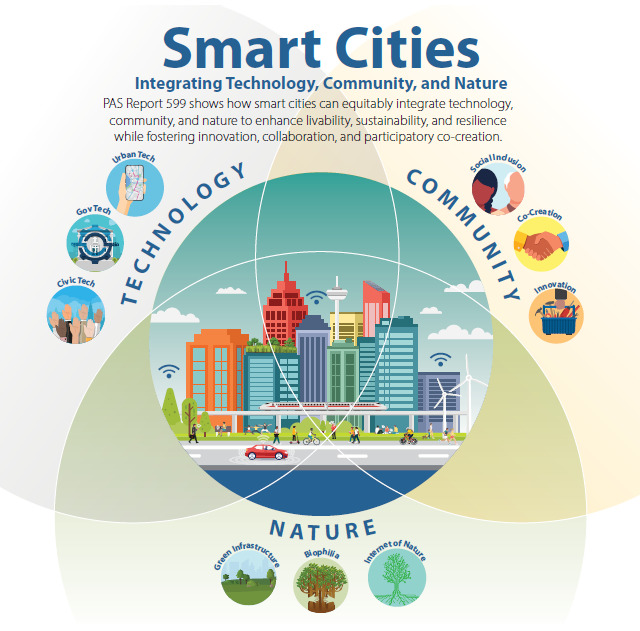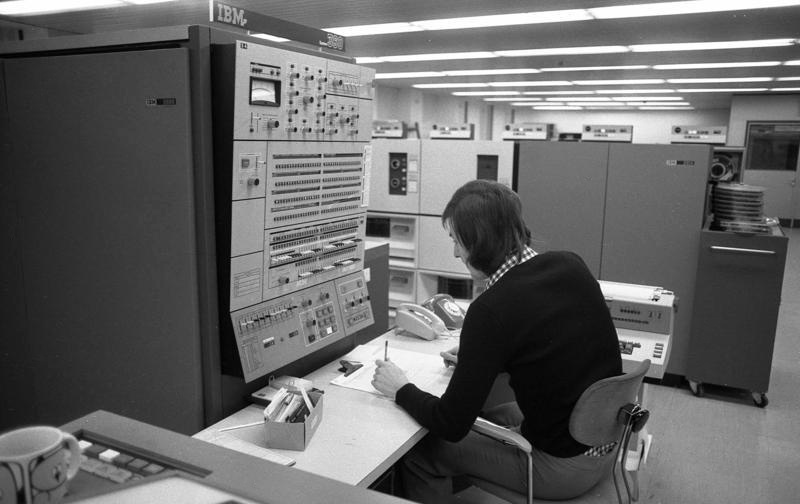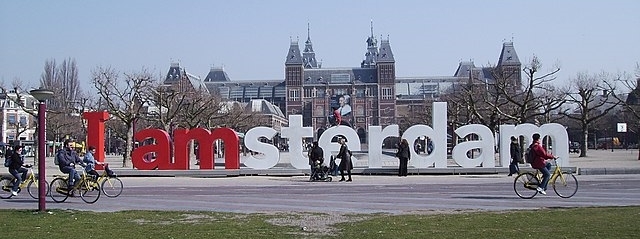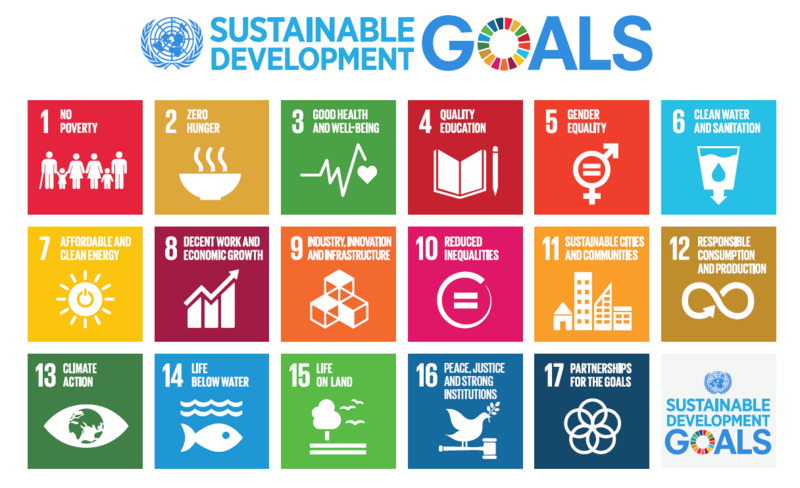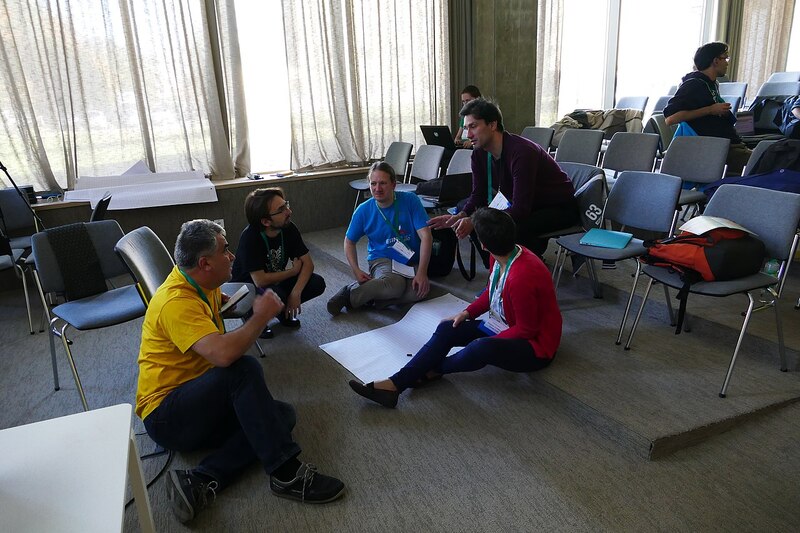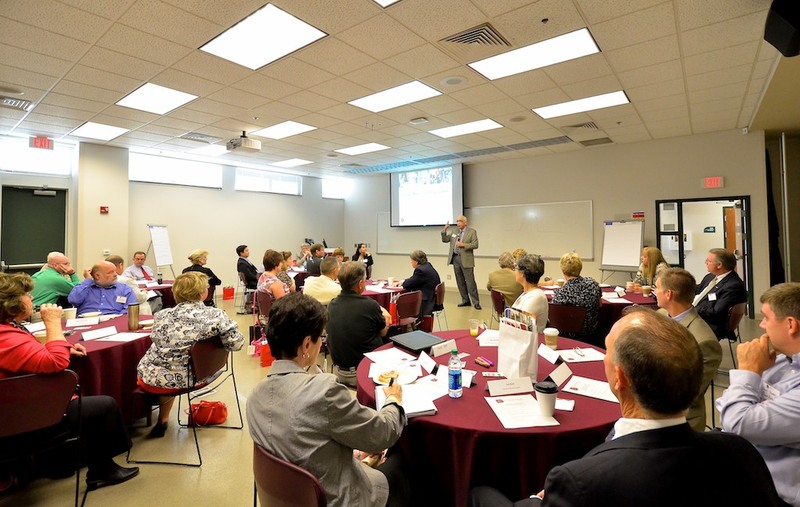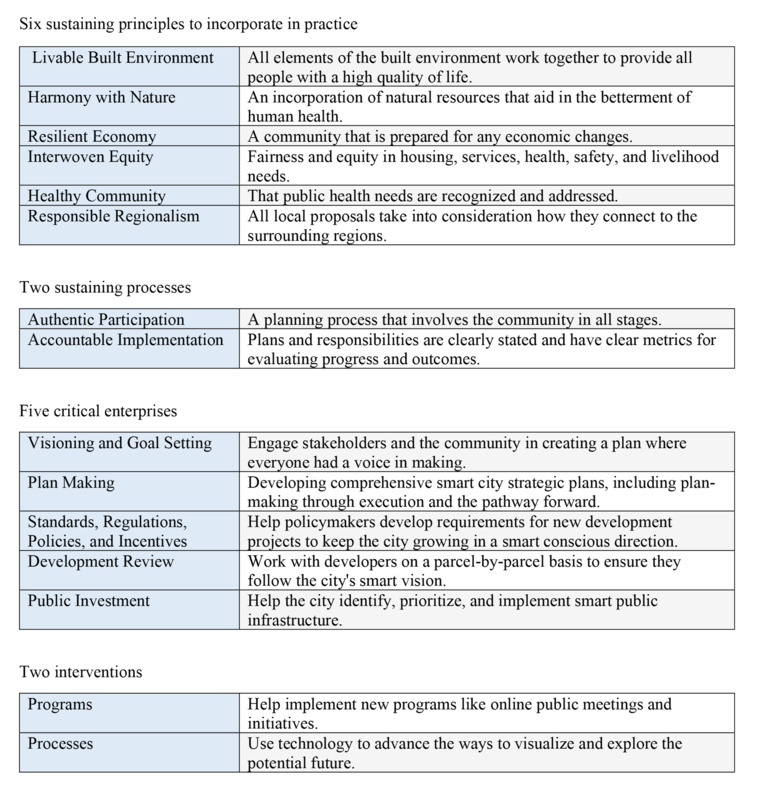Definition and History of Smart Cities
What is a Smart City?
There are many different definitions of the term "smart city." Every city that tries to become a smart city, and any company or organization involved in smart city-related activities, has its own definition. Based on the PAS report from the American Planning Association, a smart city is a city that has equitably integrated technology, community, and nature to enhance its livability, sustainability, and resilience while fostering innovation, collaboration, and participatory co-creation. Planners need to care about smart city concepts as it helps them stay relevant. The world around us is constantly evolving with the use of technology, so planners need to keep in touch with the various means that can make our process more efficient and produce quicker results that are more sustainable in the long run.
Smart City History
The beginning of the smart city movement can be traced back to the development of computer analytical capabilities during the third industrial revolution. In 1974, the Los Angeles Community Analysis Bureau used IBM-360 mainframe computers to develop a database of 550 social and physical factors for census tracts through the city, referred to as a Cluster Analysis of Los Angeles. The project's goal was to inform policy and action to alleviate poverty and address blight. The vision of the project's creators was to create a control panel that would provide real-time data to urban policy decision-makers. But it sadly was not possible with the level of available technology at that time. This project foreshadowed the use of big data and the establishment of online data portals by contemporary smart cities.
Then in 1994, Amsterdam established a De Digital Stad (DDS), which translates to The Digital City, marked as the proper start of the term "smart city." DDS was a free net designed to provide easy access to the internet and improve communication between the government and residents. Unfortunately, the initiative ended in 2001 when its municipal subsidy was discontinued. However, volunteers carried on the project independently. And in 2009, the Amsterdam Smart City platform was launched, a public-private partnership encompassing governmental agencies, knowledge institutions, companies, and foundations. To this day, Amsterdam continues to be a leader in the smart city revolution.
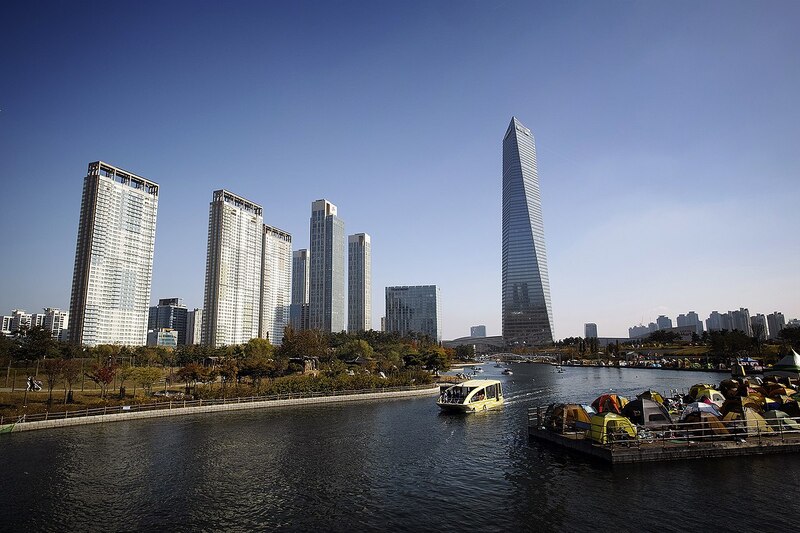
Figure 4 Image of Songdo by Dongjun Kim
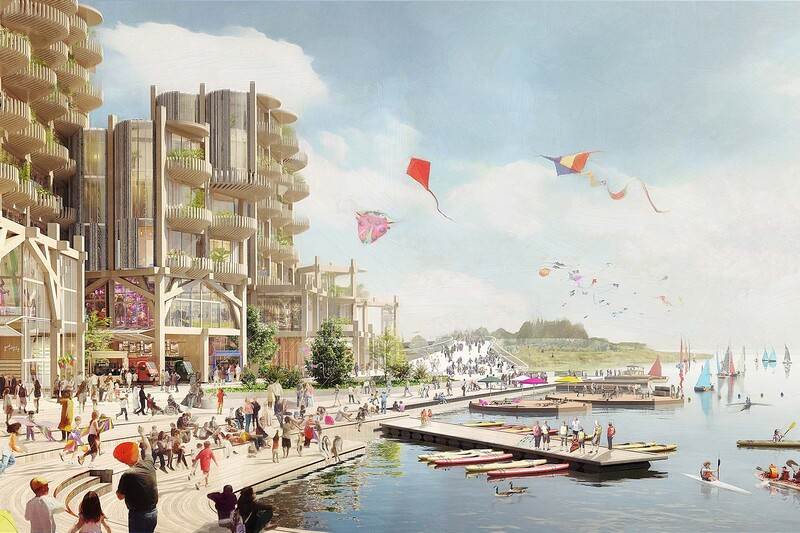
Figure 5 Rendering from Sidewalk Labs of Toronto’s Quayside

Figure 6 Barcelona Superblock by Alamy
The Evolution of Smart Cities
There are three key players in the evolution of smart cities. First is Boyd Cohen, a researcher in smart cities' sustainable development. He defined the cities into three categories:
- Smart City 1.0: A technology-driven development
- Smart City 2.0: A technology-enabled development led by the city
- Smart City 3.0: A citizen co-created development
Then came Herman van den Bosch, a management development professor and curator for Amsterdam Smart City. He proposed that the term "smart city" be replaced with the term "inclusive city" as he highlights the importance of community involvement. 1.0 has none, 2.0 has limited, and 3.0 takes community involvement to the next level. He also defined the smart city evolutions in further detail.
- Smart City 1.0 adopts smart city solutions without understanding the implications for its residents. It is often initiated solely by tech companies, and its success is based on efficiency and performance improvements. A good example would be South Korea's Songdo International Business District. Although it is a technology-focused development, it did not expand further beyond that.
- Smart City 2.0 has more forward-looking municipal leaders and administrators who play a role in implementing technological innovation in the city. An example would be Sidewalk Labs' plan for Toronto's Quayside. This development is technologically advanced and is being led by the municipality but lacks community involvement.
- Smart City 3.0 is when local government and community members collaborate to determine the best use of smart technology in their city. A good example is Barcelona, Spain. The city's municipal leaders used technology to connect to the public directly and work side by side to decide what is best for their city.
Lastly, ESI ThoughtLab came into the picture. They are an economic consulting agency that has researched the development of smart cities. And they introduced smart city 4.0. This version uses technology, data, and community engagement to achieve the United Nation's Sustainable Development Goals.
How to Achive Smart City 4.0
There are many obstacles to keep an eye on when striving for 4.0 evolution:
- Gaining the support of citizens
- Speed of development to keep up with needs
- Complexity of procurement
- Keeping up to date with technology
- Policies and barriers
- And managing cybersecurity
As community involvement is the crucial differentiating factor between the smart cities' evolutions, gaining community support is the most important and challenging factor. People already feel there is a lack of information on the topic, making them hesitant in return. So, it is essential to reach out and inform the people along the way. There are also factors that one must balance. Keep in mind, though, that each city will have its unique mix. Those factors are:
- Governance: top-down vs. bottom-up planning
- Data: Closed vs. open access & surveillance vs. privacy
- Technology: tech in control vs. people in control & tech as the end vs. tech as the means
- Priorities: Economy first vs. sustainable development & exclusion vs. inclusion
Integrating the Smart City into Planning Practice
Smart cities are changing contemporary practice, so planners need to be ready for it. Outlined bellow are various ways planners can incorporate smart city thinking into daily practice.
